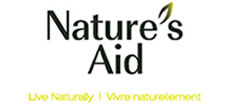An additional 196 hectares (484 acres) protected in the Outaouais for the benefit of wetlands and their standard-bearer: the frog
Thanks to the generosity of donor Pierre Boucher and an anonymous donor, who each donated a portion of their property, the Nature Conservancy of Canada (NCC) today announced the protection of 155 hectares (383 acres) in the municipality of Cantley and 41 hectares (101 acres) in the municipality of Val-des-Monts, located north of Gatineau. As part of its work to protect some of Quebec's most precious natural areas, NCC is adding these sites, featuring forests, streams and wetlands, to the 4,000 hectares (9,884 acres) already protected in the Ottawa Valley.
Frogs as significant indicators of the state of an environment
The now protected area provides suitable habitat for frogs, including wood frog and spring peeper. While these frogs are considered common, like other amphibians, they are important to the ecosystem and key indicators of environmental health.
“Frogs play several important ecological roles,” says Caroline Gagné, NCC biologist and program director for western Quebec. “They are both predators, eating insect pests, and prey for other animals. In addition, because they are amphibians, they can breathe and drink through their skin. As a result, their skin stores elements of human pollution, which can then be measured.”
A site with several other animal species to protect
And that's not counting increasing or decreasing frog populations in a given area, which are other indicators of environmental health. Unfortunately, frogs, like all other amphibians, are in decline around the world, and part of the solution is to protect wetlands, a central issue for NCC.
Many birds also frequent these newly protected areas, such as Canada warbler, designated as threatened under Canada’s Species at Risk Act andolive-sided flycatcher, designated as a species of special concern. Both bird species are also likely to be designated as threatened or vulnerable under the Quebec Act Respecting Threatened or Vulnerable Species.
The community is rallying for conservation
The Ottawa Valley abounds in exceptional forests and wetlands rich in biodiversity. Biologists agree that it is one of the most important natural areas in Quebec. This project would not have been possible without the region's benefactors: the landowners who donated their land to NCC, the volunteers who participate in inventorying the species found in the Outaouais region and anyone who is involved in any way in protecting this environment.
Quotes
“This property is an extraordinarily rich environment for biodiversity. I have spent a lot of time there with my two sons. It taught us how to observe nature. It's about sitting quietly and observing. After a while, nature comes alive and you can observe and hear all the richness that is there: the frogs that give a concert at sunset, the beavers at work, the multitude of birds that sing, not to mention the large mammals and predators of all kinds, coyotes, fishers and even wolves! I am happy to have given this land to the Nature Conservancy of Canada who will maintain it in its natural state for generations to come!” – Pierre Boucher
"The surface area occupied by natural environments in Quebec has unfortunately decreased over the last few decades, especially in the south, where the majority of the population is concentrated. We must, therefore, do more to conserve the remaining natural areas while restoring others. Today, I would like to highlight the protection of 155 hectares (383 acres) of forest, wetland and streams in the municipalities of Val-des-Monts and Cantley. These are being added to the already existing network protected areas within the beautiful Outaouais region. The Government of Quebec is proud to contribute to the Nature Conservancy of Canada's actions." - Benoit Charette, Minister of the Environment and the Fight Against Climate Change, Minister Responsible for the Fight Against Racism and Minister Responsible for the Laval Region
Acknowledgements
This project was made possible by several partners. In particular, NCC would like to thank Mr. Pierre Boucher, the former owner of one of the sites, for his generosity as well as an anonymous donor for donating his property as part of the Government of Canada’s Ecological Gifts Program. This program provides enhanced tax incentives for individuals or corporations who donate ecologically significant land.
Financial support for the conservation of these properties has also been provided by the Government of Quebec through the Projet de partenariat pour les milieux naturels (PPMN), the U.S. Fish and Wildlife Service under the North American Wetlands Conservation Act, and the Government of Canada through the Natural Heritage Conservation Program, part of Canada’s Nature Fund.
About
The Nature Conservancy of Canada (NCC) is Canada’s leading not-for-profit, private land conservation organization, working to protect our most important natural areas and the species they sustain. Since 1962, NCC has helped to protect 14 million hectares (35 million acres), coast to coast to coast, including 48,000 hectares (approximately 118,600 acres) in Quebec.
The Projet de partenariat pour les milieux naturels (PPMN) is a four-year grant of more than $53 million from the Ministère de l'Environnement et de la Lutte contre les changements climatiques to NCC. It provides support for voluntary conservation initiatives to ensure the protection of natural areas of interest by establishing financial partnerships with conservation organizations in the province. The PPMN thus aims to develop and consolidate Québec's network of protected areas located on private land.
The Government of Canada's Natural Heritage Conservation Program (NHCP) is a unique public-private partnership designed to support the creation of new protected and conserved areas by securing private lands and private interests in lands. The program is administered by the Nature Conservancy of Canada (NCC). The federal government's investment in the program is leveraged by matching contributions raised by NCC and its partners, Ducks Unlimited Canada and Canada's conservation community.
To learn more about the Ecological Gifts Program, visit canada.ca/ecological-gifts.
Learn More
Follow us on on X (formerly Twitter): x.com/NCC_CNC | x.com/NCC_CNCMedia
Find us on Facebook
- 30 -




